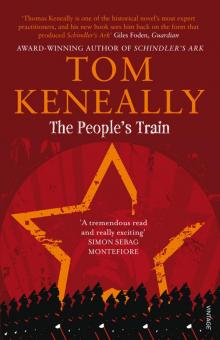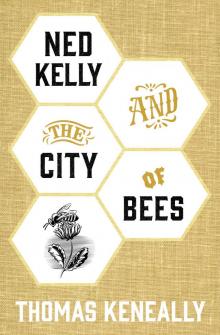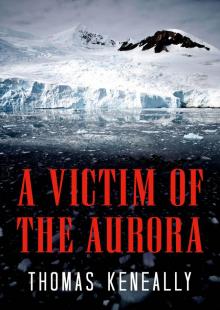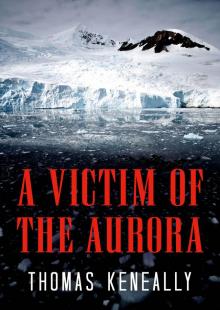- Home
- Thomas Keneally
Three Famines Page 2
Three Famines Read online
Page 2
In the early twentieth century – sixty years after the failure of potatoes had put the English peasantry under pitiful pressure, subjected the Scots to the most acute want and coercive emigration, and come close to destroying the peasant population of Ireland – Emmeline Pankhurst’s suffragettes went on hunger strikes in prison to shame the authorities and achieve equal suffrage for women. The government feared the potency of this individually chosen hunger by women. In all cases it ordered forced feeding, which was resisted by the hunger-striking young women. But largely, through occasional release and other stratagems of the authorities, the suffragettes survived their gestures.
In 1981, the Irish republican prisoner Bobby Sands, and a number of other prisoners in the H-Blocks in HM Prison Maze, Belfast, volunteered for a hunger strike. It was designed to lend moral weight to their demand for political status rather than the criminal status imposed on them by British law. Sands began his starving process first, in the hope his objective would be achieved before his comrades needed to start theirs. He died after sixty-six days.
Without questioning the courage of either the suffragettes or Bobby Sands, or the obviously disturbing impact their deaths had on those in power, I choose here to look at cases of unchosen hunger, unchosen necrosis, unchosen obliteration.
‘The stomach is cruel,’ said a Bengali victim in 1943. ‘Unless you give it something to eat, it won’t let you sleep.’ But as the stomach howls, the body slowly devours its own substance. Starvation, for Bobby Sands equally as for the millions of its unwilling victims, is the ultimate stage of a long period of malnutrition.
The stages the body descends through while undergoing starvation are well described in medical literature. After a person lacks food for a few days, glucose, no longer absorbed from nourishment, begins to be supplied by invaluable glycogen stored in the liver, and from proteins and body fats. Body fat is broken down into fatty acids and some replacement glycerol, which the body transforms into a small amount of glucose. Amino acids are also processed into glucose. Fatty acids can for a time be used to maintain muscle, and so the glucose is used to sustain the brain, above all. Blood glucose levels, on which the organs and muscles depend for function, begin an inevitable drop. The decline becomes serious, though not yet irreversible.
Now, over ensuing days and weeks, the liver begins to transform fatty acids in the body into an increasing number of ketones – chemicals that assist the metabolism of healthy bodies, but that are now reaching unsafe levels. They too serve to run the brain. But the heart and the blood cannot readily use such an excess of ketones and thus begin to be damaged. Severe damage to the heart is one of the symptoms of the late stages of starvation.
The rate of the breakdown of proteins continues and so the body begins to look for protein in its own muscles and in their cells. Over time, the muscles waste pitifully, and the cells themselves, plundered of fatty acid, erode, death entering their very nucleus.
This wasting or self-devouring state is named marasmus and at this stage, because of the collapse of the blood’s immune system, opportunistic diseases – malaria, shigella, dysentery or typhus, for example – can easily kill the victim. Deaths from the absolutely final phases of starvation make up as few as 10 per cent of the total deaths caused by famine.
Kwashiorkor, the swelling of the bellies of children, which we see in news footage from Africa, is a cruel accompaniment to starvation. The breakdown of muscle causes any remaining fat to accumulate in the belly. It is a condition not unknown in the West among alcoholics and, according to some estimates, 50 per cent of elderly Americans in nursing homes. It also occurs in victims of anorexia.
In the earlier stages of starving, hunger can diminish as the body attempts to negotiate what it hopes will be a short episode of want. But when, in days or perhaps a few weeks, it becomes apparent that the crisis will continue, a preoccupation with food becomes so intense that it has the power to overturn the starving person’s normal morality and sense of self. The victim becomes a new person. The fastidious become slovenly; the kindly become aggressive; the moral are caught up in the great amorality of famine. Fraternity and love wither. Judgement vanishes and a hyperactive anxiety seizes the mind – it is this that in part drives people out onto the roads and gives them the nervous energy to seek nourishment. Perhaps because the brain is, at the same time, sustained yet confused by an unfamiliar proportion of ketones and glucose, emotional distress, profound depression and agitation overwhelm the victim. In some, a furious and disproportional shame at their condition will cause them to wall themselves in their houses and never re-emerge. Sexual desire dwindles. Sleep brings little comfort, for most starving cannot sleep properly. There are spasms of anger and hysteria, which mystify the aid-givers, should they turn up. Delusions and illusions overtake the mind – in many cases the starving become psychotic and sometimes do not even recognise food when at last they find it. Yet dreams of cannibalism also come to torment the mind.
Lieutenant Colonel K. S. Fitch, who saw many starving in military hospitals, wrote a medical history of the Bengal famine and gave a fascinating picture of the mystifying characteristics of the famished. The desperate cases would abscond from hospital to disappear into the uncertainty of the open countryside – ‘a mass and individual urge to roam’ – feeling driven by an inner need to go on doomed searches for food. In one destitute hospital, an emaciated man was seen sitting on a hospital bed with a dish of rice and curry in front of him, and crying out for sustenance. Starvation had conditioned him not to see the food before him. Fitch mentions decayed and septic teeth, coated tongues, and an irritable and morose childishness and unconsciousness of surroundings. The hungry would pass stools and urine wherever they were. ‘The human destitute became closely akin to the starving pariah dogs seen in eastern bazaars.’
When starvation is well-advanced in a population, relief agencies must be careful with the food they provide to sufferers. World War II survivors of the concentration camps of Europe and the prison camps of the Japanese often describe fellow prisoners, after liberation, enjoying unaccustomed access to as much food as they wanted, and then dying rapidly and unexpectedly. A sudden large intake of nourishment gives bacteria and viruses the minerals they need to rebound almost instantly and to attack the body, whose own immune system has barely begun to rebuild itself. And since the body’s organs have not had time to accommodate themselves to an onslaught of plenty, they fail in their attempt to deal with it.
2
Short Commons
SEASONS OF NEED and marginal survival for millions generally precede a famine.
The Irish were familiar with a certain level of food shortage. Visitors to nineteenth-century Ireland, usually coming in the summertime, were struck by the obvious hunger that afflicted the peasantry as they waited for the next potato harvest. Travelling from Dublin to Carlow in midsummer 1835, Alexis de Tocqueville was shocked by the poverty he saw. ‘The population looks very wretched. Many wear clothes with holes or much patched. Most of them bare-headed and barefoot … it is a frightening thing, I assure you, to see a whole population reduced to fasting like Trappists, and not being sure by fasting of surviving to the next harvest.’ Summer visitors such as de Tocqueville travelled by main roads, and if the people on the highways presented such a picture, what must things have been like in remoter Ireland?
All this would explain the emotional and sometimes poetic anticipation of the harvest. When the blight came, an Irishman, remembering the days of plenty, wrote, ‘A fond farewell to the white potatoes, it was good to be near them; always arriving in good humour, laughing at us at the head of the table. They were a help to the nurse, to the young and old, to weak and strong.’
Though they did not know it, the potato as the main item of diet for millions of the Irish protected them from scurvy, which occurred elsewhere in Europe, and from pellagra, the vitamin-deficiency disease endemic to those parts of the United States and Europe in which maize was the staple. Potatoes pro
vided the Irish peasant with more than twice the protein of today’s recommended level for active males, possessing nearly twice the energy value, three times the amount of calcium and three times the amount of iron. Sir William Petty, a famed statistician (or ‘political arithmetician’, as the term then went), said that ‘six out of eight of all the Irish fed chiefly upon milk and potatoes’.
The potato had arrived in Spain from Central or South America, one of the less treasured items discovered by Spanish incursions, and reached Ireland in about 1590. There, it came to replace oatmeal as the main food. It was a popular food in Britain and Eastern Europe. By contrast, the French despised it as a stockfeed, and better-off Germans considered its consumption the mark of a peasant. But the potato was iconic in Ireland, and its obliteration in this garden and that created an enormous consternation.
An extraordinary variety of potato existed, and not all Irish were growing the same species. There is a welter of names – English Reds, Apples, White Eyes, Barbour’s Wonders, Wicklow Banners, Coppers, Pink Eyes, Flat Spanish. On the edge of the famine, the poor were increasingly growing a potato called the Lumper, which was resistant to the disease named curl. Curl weakened the plant by attacking its leaves, but not the potato itself. Lumpers were not as succulent as Apples, but for the Irish small farmer and peasantry they were very reliable – as assured as the sun coming up.
The Irish ate their potatoes by their peat fires, the parents and older children sitting on stools, picking potatoes from a bowl and dipping them in a dish of salt. Such a meal was called ‘dip at a stool’. If possible, as they ate they drank buttermilk.
The three million or so Irish most vulnerable to the famine lacked livestock, except that thousands of cabins were home not only to a family but to a pig, ‘Paddy’s pig’, which would be sold in the spring or early summer so that the family could buy oatmeal and other food to tide them over till the next potato crop.
Similarly, Bengalis generally were poor in livestock. Their staple was rice, which was often parboiled while unmilled and still in its outer husk. This form of cooking happened to drive the B vitamins, thiamine, riboflavin and niacin, into the very centre of the grain, though the Bengali peasant knew nothing of the beneficence of this effect, any more than the Irish peasant did of the vitamins and minerals available in the potato.
The Bengalis were also fish-eaters. Most of the fish they ate were not from the Bay of Bengal but from the river systems. One of their favourites was the climbing perch, able to work its way across a paddy field, by the motion of its fins and gill covers, from one water course to another. Fishermen would sell the more succulent parts of the fish to better-off folk, and the poor ate fish heads and entrails.
Lentils were available to them, mainly through the markets, and would increase in price beyond the reach of threatened people once the famine began. Rice and fish are still the staples of Bengali life, but their fish, and the fish markets, have been diminished somewhat since the famine by overpopulation and accompanying pollution. Fish on their own – even had the starving had the energy to pursue them – were not plentiful enough to save the Bengalis.
In the highlands of Ethiopia, the equivalent of potatoes or rice was a grain named teff. It had aspects of convenience that had helped it become the staple crop of millions. Other crops often grown on the larger farms, or by landlords, included varieties of wheat, sorghum and a plant named zengada, a wild sorghum that grew in land races – that is, areas of unfarmed land that nonetheless could produce edible grains. Farmers might also grow white barley, maize, millet, peas, rapeseed and linseed. Barley was grown mainly as a stock feed. Durra, a form of wheat now considered a health food in the West, was also popular. Grown in the south-west of the country, around the city of Jimma, coffee was a major crop for trading and was enjoyed in the home as well, where the offer of strong coffee from beans roasted on a small fire was one of the major Ethiopian courtesies. Farmers throughout the country also grew chat, a mild narcotic whose leaves people chewed. Most of it was exported to Saudi Arabia and Sudan.
But the chief crop for a highland family’s subsistence remained the four varieties of teff. Teff seeds were small, and so the seed crop did not take up much room in the farmhouse. It was easy for the farmwife to grind to a flour, from which the Ethiopians made their chief meal, the huge, thin pancake bread, injera – a fermented bread, bitter to any palate unfamiliar with it. Large circles of injera bread, spread on a low table or a large tray, are heaped with lentils and chickpeas, and each member of the family tears off a segment of the thin bread and scoop up the lentils and other food to form something like an open tortilla.
Ethiopian farmers look on teff with the same reverence the Irish displayed for the potato. They know that it is an ancient seed and a mercy of God. It is also high in calcium, phosphorus, iron, potassium, thiamine, amino acids and more.
The pastoral people in Ethiopia and Eritrea and the semi-nomadic people who lived in the eastern lowlands of Ethiopia near Somalia and the Red Sea, or in the western lowlands near the Sudanese border, owned camels, but above all the livestock they treasured were longhorn zebu cattle. Creatures so cherished by the pastoral Ethiopians look very scrawny and are often diseased, but they were beautiful and important in the eyes of their owners and produced milk, essential to their existence. Pastoralists also owned goats, which they used for meat and also for milk. They lived, and often still live, in tuqals – fold-up beehive shelters of grass and bark, easily loaded onto a camel if the livestock chose to move on to new pastures. As materially poor as they might seem to outsiders, to them their lives were the only desirable version. Yet they knew that some sudden affliction or some drastic failure of rain had the power to suspend and even destroy this.
The failure of potatoes, the lack of rice, the withering of fields of teff were the various instigators that created the conditions for these three great famines, even though for their true causes we must eventually look to other factors.
3
Nature’s Triggers
FAMINE ALWAYS HAS an initiating spark or trigger, a natural disaster that may have a greater or lesser impact on the crops growing on farmers’ land, and an event that tests the political will and wisdom of governments, the latter being more a potential cause of disaster than a trigger.
The triggers for the Ethiopian famines were the failure of one or both annual rains in 1973-4, and 1982 and 1985. Lack of rain was combined with the sudden appearance in the fields of army worms, a larval form of a moth, in reality a caterpillar rather than a worm, which is blown north on the wind from Kenya. In the past, army worms on their own had always been a blight, and Ethiopian farmers abhorred the sudden appearance of these insects among their crops. It was said, indeed it is still said, that they could devour a hectare of grain faster than a herd of 400 cattle. So their work impoverished overnight the owners of a hectare-and-a-half farm, the average size of land holding among the peasantry. Sometimes farmers planted peas among their grain crop as an insurance, since the army worms did not favour them. But peas occupied space the farmers often needed to give to their teff. In the 1970s and 1980s, the logistics of spraying crops, even if sufficient stocks of pesticide had been held in the country, continued to be beyond the capacities of both the emperor and the Derg.
Of people from Tigray in northern Ethiopia who fled to Somalia and Sudan in 1984 and were interviewed later, 30 per cent said army worms were as much of a problem to them as drought. One Tigrayan in Wad Kauli camp in the Sudan said, ‘I decided to leave home because of the drought and our enemy [the Derg]. Insects and the lack of rain were equally important, but the government caused the famine too.’
Farmers with a family of six needed to produce 1500 kilos of food a year: 1200 for the family, the remaining 300 kilos being sold locally to buy other food, shoes, clothes and other needs. The crop did not need to decline much before the family had nothing to spend.
The rain failures threatened both the highland and lowland people. The hig
hlanders feared their injera would vanish, and the lowland graziers suffered anxiety about the milk and meat of their quickly dying goats and the continued health of their cattle. The drying-out of waterholes and pasture in the lowlands and the consequent death or deterioration of their cattle, were watched with bewilderment and concern by the cattle-owning and grazing peoples of Ethiopia.
In 1769–70, a Bengal famine was estimated to have caused the death of 10 million out of 30 million inhabitants. Yet the province for the next two centuries was largely free from famine. Bengal is only 77,442 square miles, with a population of 60 million at the time of the 1943 famine. An administrative line divided West Bengal from East, and that would become the future border between India and Bangladesh. Bengal’s twenty-six districts averaged over 2 million each in population and nearly 3000 square miles each in area.
Bengal is a country of waterways, but the main rivers that flow into the Bay of Bengal through broad deltas are the Hooghly, the Padma, the Brahmaputra-Jumuna and the Meghna. The annual rainfall is 85 inches, which sheets down between June and September on the south-east monsoon. During that season, the farmers and peasants survive in their huts and houses on mounds raised above the fields.
The trigger for the famine of the early 1940s was the arrival on the coastline of a number of cyclones during 1942, and of a November 1942 tidal wave, which flooded the region around the Ganges Delta, killing 15,000 people. Because of Bengal’s small elevation above sea level, the tsunami rolled far inland, across the low farmlands and rice fields. It spread salt, which poisoned – just as they were about to be harvested – the crops of Muslim and Hindu farmers in one terrible act of God. A fungal disease named rice blast – which, like the potato blight, attacked the leaves, stalk and grain – struck the paddy fields as a result of the wave of saltwater, because the surge had swept the spores from infected parts of the country into as-yet-unaffected ones. The rice fungus reduced the average rice crop in the coastal areas and beyond by a third. There had already been the Bengali equivalent of a drought, arising from less than normal rainfall in the 1942 June to September monsoon season.

 Confederates
Confederates Flying Hero Class
Flying Hero Class Gossip From the Forest
Gossip From the Forest Schindler's List
Schindler's List Bring Larks and Heroes
Bring Larks and Heroes Australians: Flappers to Vietnam
Australians: Flappers to Vietnam The People's Train
The People's Train Crimes of the Father
Crimes of the Father A Family Madness
A Family Madness A Commonwealth of Thieves
A Commonwealth of Thieves Ned Kelly and the City of Bees
Ned Kelly and the City of Bees A River Town
A River Town Bettany's Book
Bettany's Book Blood Red, Sister Rose: A Novel of the Maid of Orleans
Blood Red, Sister Rose: A Novel of the Maid of Orleans Victim of the Aurora
Victim of the Aurora American Scoundrel American Scoundrel American Scoundrel
American Scoundrel American Scoundrel American Scoundrel Three Cheers for the Paraclete
Three Cheers for the Paraclete Australians: Origins to Eureka: 1
Australians: Origins to Eureka: 1 The Power Game
The Power Game The Chant Of Jimmie Blacksmith
The Chant Of Jimmie Blacksmith The Daughters of Mars
The Daughters of Mars Searching for Schindler
Searching for Schindler The Great Shame: And the Triumph of the Irish in the English-Speaking World
The Great Shame: And the Triumph of the Irish in the English-Speaking World Abraham Lincoln
Abraham Lincoln The Widow and Her Hero
The Widow and Her Hero Eureka to the Diggers
Eureka to the Diggers Shame and the Captives
Shame and the Captives The Survivor
The Survivor Jacko: The Great Intruder
Jacko: The Great Intruder The Book of Science and Antiquities
The Book of Science and Antiquities Homebush Boy
Homebush Boy The Playmaker
The Playmaker To Asmara: A Novel of Africa
To Asmara: A Novel of Africa A Woman of the Inner Sea
A Woman of the Inner Sea The Tyrant's Novel
The Tyrant's Novel Australians
Australians Schindler's Ark
Schindler's Ark The Soldier's Curse
The Soldier's Curse Australians, Volume 3
Australians, Volume 3 Blood Red, Sister Rose
Blood Red, Sister Rose A Victim of the Aurora
A Victim of the Aurora The Unmourned
The Unmourned Australians, Volume 2
Australians, Volume 2 To Asmara
To Asmara